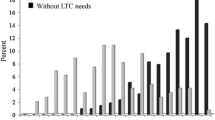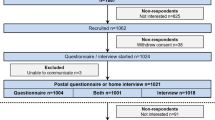Abstract
Background and aims: The Assessment of Daily Activity Performance (ADAP) test was developed, and modeled after the Continuous-scale Physical Functional Performance (CS-PFP) test, to provide a quantitative assessment of older adults’ physical functional performance. The aim of this study was to determine the intra-examiner reliability and construct validity of the ADAP in a community-living older population, and to identify the importance of tester experience. Methods: Forty-three community-dwelling, older women (mean age 75 yr ±4.3) were randomized to the test-retest reliability study (n=19) or validation study (n=24). The intra-examiner reliability of an experienced (tester 1) and an inexperienced tester (tester 2) was assessed by comparing test and retest scores of 19 participants. Construct validity was assessed by comparing the ADAP scores of 24 participants with self-perceived function by the SF-36 Health Survey, muscle function tests, and the Timed Up and Go test (TUG). Results: Tester 1 had good consistency and reliability scores (mean difference between test and retest scores (DIF), −1.05±1.99; 95% confidence interval (CI), −2.58 to 0.48; Cronbach’s alpha (a) range, 0.83 to 0.98; intraclass correlation (ICC) range, 0.75 to 0.96; Limits of Agreement (LoA), −2.58 to 4.95). Tester 2 had lower reliability scores (DIF, −2.45±4.36; 95% CI, −5.56 to 0.67; a range, 0.53 to 0.94; ICC range, 0.36 to 0.90; LoA, −6.09 to 10.99), with a systematic difference between test and retest scores for the ADAP domain lower-body strength (−3.81; 95% CI, −6.09 to −1.54), ADAP correlated with SF-36 Physical Functioning scale (r=0.67), TUG test (r=−0.91) and with isometric knee extensor strength (r=0.80). Conclusions: The ADAP test is a reliable and valid instrument. Our results suggest that testers should practise using the test, to improve reliability, before applying it to clinical settings.
Similar content being viewed by others
References
Singh NA, Clements KM, Fiatarone MA. A randomized controlled trial of progressive resistance training in depressed elders. J Gerontol 1997; 52A: M27–35.
McMurdo ME, Johnstone R. A randomized controlled trial of a home exercise programme for elderly people with poor mobility. Age Ageing 1995; 24: 425–8.
Cohen ME, Marino RJ. The tools of disability outcomes research functional status measures. Arch Phys Med Rehabil 2000; 81: S21–9.
Latham NK, Bennett DA, Stretton CM, Anderson CS. Systematic review of progressive resistance strength training in older adults. J Gerontol 2004; 59A: 48–61.
Chandler JM, Duncan PW, Kochersberger G, Studenski S. Is lower extremity strength gain associated with improvement in physical performance and disability in frail, community-dwelling elders? Arch Phys Med Rehabil 1998; 79: 24–30.
Buchner DM, Cress ME, de Lateur BJ, et al. The effect of strength and endurance training on gait, balance, fall risk, and health service use in community-living older adults. J Gerontol 1997; 52A: M218–24.
Ades PA, Ballor DA, Ashikaga T, Utton JL, Nair KS. Weight training improves walking endurance in healthy elderly persons. Ann Intern Med 1996; 124: 568–72.
Connelly DM, Vandervoort AA. Effects of detraining on knee extensor strength and functional mobility in a group of elderly women. J Orthop Sports Phys Ther 1997; 26: 340–6.
Rubenstein LZ, Josephson KR, Trueblood PR, et al. Effects of a group exercise program on strength, mobility, and falls among fallprone elderly men. J Gerontol 2000; 55A: M317–21.
Krebs DE, Jette AM, Assmann SF. Moderate exercise improves gait stability in disabled elders. Arch Phys Med Rehabil 1998; 79: 1489–95.
Cress ME, Buchner DM, Questad KA, Esselman PC, deLateur BJ, Schwartz RS. Continuous-scale physical functional performance in healthy older adults: A validation study. Arch Phys Med Rehabil 1996; 77: 1243–50.
Fried LP, Ettinger WH, Lind B, Newman AB, Gardin J. Cardiovascular Health Study Group. Physical disability in older adults: a physiological approach. J Clin Epidemiol 1994; 47: 747–60.
Greig CA, Young A, Skelton DA, Pippet E, Butler FM, Mahmud SM. Exercise studies with elderly volunteers. Age Ageing 1994; 23: 185–9.
Keysor JJ, Jette AM. Have we oversold the benefit of late-life exercise? J Gerontol 2001; 56A: M412–23.
Lord SR, Ward JA, Williams P, Strudwick M. The effect of a 12- month exercise trial on balance, strength, and falls in older women: A randomized controlled trial. J Am Geriatr Soc 1995; 43: 1198–206.
De Vreede PL, Samson MM, van Meeteren NL, van der Bom JG, Duursma SA, Verhaar HJ. Functional tasks exercise versus resistance exercise to improve daily function in older women: a feasibility study. Arch Phys Med Rehabil 2004; 85: 1952–61.
De Vreede PL, Samson MM, van Meeteren NL, Duursma SA, Verhaar HJ. Functional-task exercise versus resistance strength exercise to improve daily function in older women: A randomized, controlled trial. J Am Geriatr Soc 2005; 53: 2–10.
Cress ME, Buchner DM, Questad KA, Esselman PC, deLateur BJ, Schwartz RS. Exercise: Effects on physical functional performance in independent older adults. J Gerontol 1999; 54A: M242–8.
Duncan PW, Weiner DK, Chandler J, et al. Functional reach: A new clinical measure of balance. J Gerontol 1990; 45: M192–7.
Van Genderen FR, de Bie RA, Helders PJ, van Meeteren NL. Reliability research: towards a more clinically relevant approach. Phys Ther Rev 2003; 8: 169–76.
Ottenbacher KJ, Branch LG, Ray L, Gonzales VA, Peek MK, Hinman MR. The reliability of upper-and lower-extremity strength testing in a community survey of older adults. Arch Phys Med Rehabil 2002; 83: 1423–7.
Tanaka K, Kim HS, Yang JH, Shimamoto H, Kokudo S, Nishijima T. Index of assessing functional status in elderly Japanese men. Appl Human Sci 1995; 14: 65–71.
Schenkman M, Morey M, Kuchibhatla M. Spinal flexibility and balance control among community-dwelling adults with and without Parkinson’s disease. J Gerontol 2000; 55A: M441–5.
Aaronson NK, Muller M, Cohen PD, et al. Translation, validation, and norming of the Dutch language version of the SF-36 Health Survey in community and chronic disease populations. J Clin Epidemiol 1998; 51: 1055–68.
Podsiadlo D, Richardson S. The Timed ‘Up & Go’: A test of basic functional mobility for frail elderly persons. J Am Geriatr Soc 1991; 39: 142–8.
Skelton DA, McLaughlin AW. Training functional ability in old age. Physiotherapy 1996; 82: 159–67.
Samson MM, Meeuwsen IB, Crowe A, Dessens JA, Duursma SA, Verhaar HJ. Relationships were observed between physical performance measures, age, height and body weight in healthy adults. Age Ageing 2000; 29: 235–42.
Edwards RHT, Young A, Hosking GP, Jones DA. Human skeletal muscle function: description of tests and normal values. Clin Sci Mol Med 1977; 55: 283–90.
Skelton DA, Young A, Greig CA, Malbut KE. Effects of resistance training on strength, power, and selected functional abilities of women aged 75 and older. J Am Geriatr Soc 1995; 43: 1081–7.
Brown M, Sinacore DR, Ehsani AA, Binder EF, Holloszy JO, Kohrt WM. Low-intensity exercise as a modifier of physical frailty in older adults. Arch Phys Med Rehabil 2000; 81: 960–5.
Bassey EJ, Short AH. A new method for measuring power output in a single leg extension: feasibility, reliability and validity. Eur J Appl Physiol Occup Physiol 1990; 60: 385–90.
Bland JM, Altman DG. Statistical methods for assessing agreement between two methods of clinical measurement. Lancet 1986; i: 307–10.
Rankin G, Stokes M. Reliability of assessment tools in rehabilitation: an illustration of appropriate statistical analyses. Clin Rehabil 1998; 12: 187–99.
Author information
Authors and Affiliations
Corresponding author
Rights and permissions
About this article
Cite this article
de Vreede, P.L., Samson, M.M., van Meeteren, N.L. et al. Reliability and validity of the Assessment of Daily Activity Performance (ADAP) in community-dwelling older women. Aging Clin Exp Res 18, 325–333 (2006). https://doi.org/10.1007/BF03324667
Received:
Accepted:
Published:
Issue Date:
DOI: https://doi.org/10.1007/BF03324667




